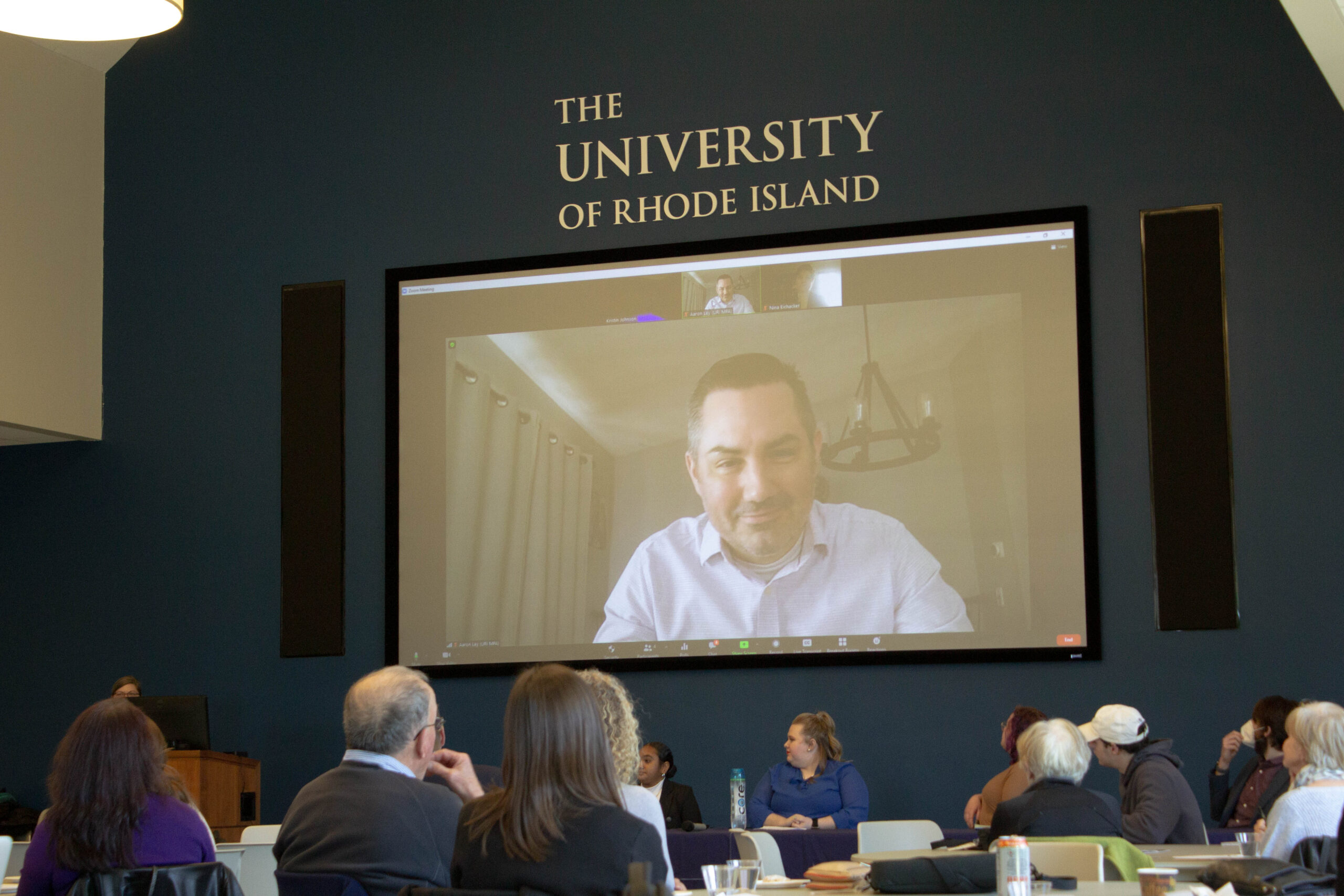How To Be a Media Literate Citizen: “Misinformation on COVID-19 Vaccine and Critical Race Theory.” PHOTO CREDIT: Maddie Bataille | Photo Editor
The second event at the Harrington School of Communication and Media conference on misinformation, conspiracy theories and media literacy highlighted how misinformation and conspiracy theories can be seen today.
The panel featured Aaron Ley, an associate professor of political science at the University of Rhode Island, and five URI students, Mary Lind, Juliet Waromi, Shawn Fennell, Lauren Smith and Kate Sylvester, who presented their research on disinformation and misinformation in current events.
Ley, who joined the panel via Zoom, kicked off the panel by recounting another misinformation event held at URI in 2016 that inspired him to continue his research in disinformation.
“We actually had a symposium on climate denialism,” Ley said. “I was a newer professor at the time and I was kind of starting to think about some research projects that might revolve around climate change. And I focused particularly on some groups that were using legal tactics.”
Ley recounted that some of those groups, including the American Tradition Institute, a foundation that says they focus on “public policy research and education.”
According to him, they were using sophisticated networks they had created to deny and spread misinformation about climate change.
The students went on to explain why misinformation like this spread so easily when scientific findings report otherwise.
The speakers referenced a Massachusetts Institute of Technology (MIT) study entitled “Novelty of Falsehood.” According to them, this data showed that false information tends to spread so rapidly and effectively because it generates more emotions of surprise and disgust in citizens, rather than sadness and anticipation, like factual information does.
The speakers then talked about how misinformation affected the conversation surrounding the safety of COVID-19 vaccines and how that misinformation was spread so widely.
“So, was there general vaccine hesitancy before the COVID-19 pandemic? Yeah, absolutely,” said Lind. “Inoculation, which is the process of collecting or putting the virus in somebody’s community has been practiced for many years — for centuries around the world.”
Lind referenced inoculation being successfully used as early as the smallpox epidemic in Europe.
The pane members also tackled false conspiracy theories about the vaccines, such as the vaccine putting trackers in people’s bodies. According to the panel member, these beliefs are so strongly held because of how widespread vaccine skepticism is. In part, this is due to the impact of social media platforms, where information can spread fast.
“[Conspiracy theorists] are more engaged and they use a lot more emotional language on social media,” said Lind.
According to the panelist, it is not party affiliation that can determine whether people are for or against the vaccine, but class divide. Lind said that because public health in America and in other countries is no longer treated as a collective endeavor, instead citizens’ health is treated as a commodity.
“For people who face other threats such as — for example, food insecurity, housing insecurity, poverty, dangerous neighborhoods — COVID-19 is just one of many threats that impact them,” Lind said.
The panel also discussed how misinformation regarding Critical Race Theory (CRT) has been spread in Rhode Island.
According to the American Bar Association, CRT is not a noun, but a verb, and “critiques how the social construction of race and institutionalized racism perpetuate a racial caste system that relegates people of color to the bottom tiers”.
The panel cited examples of local parents and representatives who have spread misinformation about what CRT is, who it is taught to and what is being taught.
According to Ley, the best way citizens can prevent the spread of misinformation is to know their rights and understand their ability to see the inner workings of the people in power in our democracy.
“Sunlight is the best disinfectant,” Ley said.





